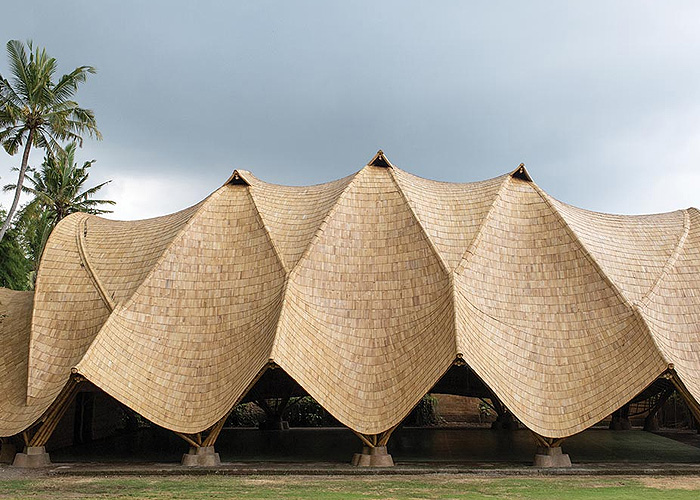- Home
- Course Library
-
Academies
- Thermal Bridging
- Glass in Architecture
- Multifamily Housing
- Custom Home
- Biophilia
- Interiors
- Sustainability
- Waterproofing
- Mastering Movement™
- Glass and Glazing Design
- Acoustics
- Metal Architecture
- ADA
- Indoor Environmental Quality: Healthy Design
- Mass Timber
- Commercial Roofing
- Heat Pump Water Heaters
- Healthcare
- Technology and Business of Architecture
- Lunch & Learns
- |
- Login
- Home
- Course Library
-
Academies
- Thermal Bridging
- Glass in Architecture
- Multifamily Housing
- Custom Home
- Biophilia
- Interiors
- Sustainability
- Waterproofing
- Mastering Movement™
- Glass and Glazing Design
- Acoustics
- Metal Architecture
- ADA
- Indoor Environmental Quality: Healthy Design
- Mass Timber
- Commercial Roofing
- Heat Pump Water Heaters
- Healthcare
- Technology and Business of Architecture
- Lunch & Learns
- Login
Just Released

Harnessing Energy and Reducing Carbon with Phase Change Material Ceilings
Contributing to sustainability criteria
Sponsored By Armstrong World Industries
Credits: AIA/HSW, GBCI, ICC
Type: Multimedia

New Needs for Existing Buildings
Adaptive reuse can change empty buildings into new vibrant places
Sponsored By Bison Innovative Products, National Terrazzo & Mosaic Association, Inc., Geberit
Credits: AIA/HSW, GBCI, ICC, IDCEC/HSW
Type: Article

Curtain Wall Installation for Designers
Myths, Realities, and Systems
Sponsored By The Ornamental Metal Institute of New York
Credits: AIA/HSW, GBCI, ICC, IDCEC/HSW, PDH
Type: Article

Industrial Strength Aluminum Ladders
The advanced material for the modern age
Sponsored By ALACO Ladder Company
Credits: AIA/HSW, ICC, IIBEC
Type: Article

Navigating ADA Signage Compliance
Keeping up to date with Standards for Accessible Design for interiors
Sponsored By Inpro
Credits: AIA/HSW, ICC, IDCEC
Type: Article

Sustainable By Design
How Paint Can Contribute to Greener and Healthier Commercial and Residential Spaces
Sponsored By BEHR
Credits: AIA/HSW, GBCI, ICC, IDCEC/HSW
Type: Multimedia
Upcoming Webinars

The Architecture Firm Maturity Index: A Roadmap to Sustainable Growth
Credits: AIA/LU, ICC
Type: Webinar
Apr 29 2025 2:00 PM ET

Exploring Commercial Window Treatments
Credits: AIA/HSW, ICC
Type: Webinar
Apr 30 2025 2:00 PM ET

The Basics of Perimeter Fire Containment
Credits: AIA/HSW, ICC
Type: Webinar
May 1 2025 2:00 PM ET

Wood in Architecture: Mass Timber in Transportation Infrastructure
Credits: AIA/HSW, ICC
Type: Webinar
May 6 2025 2:00 PM ET

Understanding Embodied Carbon in Architectural Projects
Credits: AIA/HSW, ICC
Type: Webinar
May 7 2025 2:00 PM ET

Unlock Enhanced Building Performance: Improved Durability and Efficiency Using Air Barriers and Vapor Retarders
Credits: AIA/HSW, ICC, IIBEC
Type: Webinar
May 13 2025 2:00 PM ET

CMU Embodied Carbon: Not All Concrete is the Same
Credits: AIA/HSW, ICC
Type: Webinar
May 13 2025 2:00 PM ET

Designing ADA-compliant Commercial Showers & Bathrooms
Credits: AIA/HSW, ICC
Type: Webinar
May 14 2025 2:00 PM ET

Proper Wind Design of Roof Systems
Credits: AIA/HSW, ICC
Type: Webinar
May 20 2025 2:00 PM ET

Glass Railing Systems: Designing for Performance and Codes
Credits: AIA/HSW, ICC
Type: Webinar
May 20 2025 2:00 PM ET

Designing for Accessibility and Sustainability: A Unified Approach
Credits: AIA/HSW, ICC
Type: Webinar
May 28 2025 2:00 PM ET

Advanced Design Against Adverse Conditions in a Commercial Roofing System
Credits: AIA/HSW, ICC, IIBEC
Type: Webinar
May 28 2025 2:00 PM ET

Designing for Resilience in a Changing Climate
Credits: AIA/HSW, PDH
Type: Webinar
May 29 2025 2:00 PM ET

Redefining Rooftops: Understanding Rooftop Deck Systems
Credits: AIA/HSW, ICC, IIBEC
Type: Webinar
Jun 4 2025 11:00 AM ET

Magnesium Oxide Panels: A Durable, Fire-Resistant Alternative for Modern Construction
Credits: AIA/HSW
Type: Webinar
Jun 5 2025 2:00 PM ET

Innovative Building Envelopes 101
Credits: AIA/HSW, ICC
Type: Webinar
Jun 10 2025 2:00 PM ET
Editorial

Spaces for Design
Credits: AIA/LU, ICC
Type: Article

Net-Zero Retrofits
Credits: AIA/HSW, ICC
Type: Article

Sustainability in Practice
Credits: AIA/HSW, ICC
Type: Article

Prefabrication
Credits: AIA/HSW
Type: Article

Remaking the Met
Credits: AIA/HSW
Type: Article

Trauma-Informed Design
Credits: AIA/HSW, ICC
Type: Article

High-Performance Landscapes
Credits: AIA/HSW, ICC
Type: Article

Food, Wine & Hospitality
Credits: AIA/HSW, ICC
Type: Article
.jpg)
Circular Construction
Credits: AIA/HSW, ICC
Type: Article

Affordable Housing & Energy Performance
Credits: AIA/HSW, ICC
Type: Article

Tall Buildings
Credits: AIA/HSW, ICC
Type: Article

Transportation & Infrastructure
Credits: AIA/HSW, ICC
Type: Article

Daylighting in Museums
Credits: AIA/HSW, ICC
Type: Article

Campus Geo-Exchange Systems
Credits: AIA/HSW, ICC
Type: Article

Office Conversions
Credits: AIA/HSW
Type: Article

Structural Bamboo
Credits: AIA/HSW, ICC
Type: Article
Accessibility

Navigating ADA Signage Compliance
Credits: AIA/HSW, ICC, IDCEC
Type: Article

Fully Integrated Health Care Solutions: The Restroom and Beyond
Credits: AIA/HSW, GBCI, ICC, IDCEC/HSW
Type: Multimedia

Designing Smarter Restrooms for Education
Credits: AIA/HSW, GBCI, ICC, IDCEC/HSW
Type: Multimedia

ADA - Accessibility in Toilet Room Design
Credits: AIA/HSW, GBCI, ICC, IDCEC/HSW
Type: Multimedia

Design Trends in Commercial Washrooms and Locker Facilities
Credits: AIA/HSW, GBCI, ICC, IDCEC/HSW
Type: Multimedia

The Sustainability of Automated Parking with EV Charging
Credits: AIA/HSW
Type: Article

Wellness-Based Design Strategies in Healthcare
Credits: AIA/HSW, GBCI, ICC, IDCEC/HSW
Type: Article

INCLUSIVITY: People, Public Furniture, and Public Space
Credits: AIA/HSW, GBCI, ICC, IDCEC/HSW
Type: Article

Tatiana Bilbao - Tatiana Bilbao Estudio
Credits: AIA/LU
Type: Podcast

Navigating Compliance with ADA Signage
Credits: AIA/HSW, ICC, IDCEC/HSW
Type: Webinar On-Demand

Brian Korte-Clayton Korte
Credits: AIA/LU
Type: Podcast

Health Care Design
Credits: AIA/HSW, ICC
Type: Article

Designing ADA-compliant Commercial Showers & Bathrooms
Credits: AIA/HSW, ICC, IDCEC/HSW
Type: Webinar On-Demand

Creating a Safe Haven in Educational Buildings
Credits: AIA/HSW, GBCI, ICC, IDCEC/HSW
Type: Article

Sit, Stand, Move, Repeat
Credits: AIA/HSW, GBCI, ICC, IDCEC
Type: Multimedia

Built to Protect
Credits: AIA/HSW, ICC, IDCEC/HSW
Type: Webinar On-Demand
Acoustics

Beyond the Noise: Elevating Building Design, Performance and Experience with Acoustics
Credits: AIA/HSW, IDCEC/HSW
Type: Article

Focus on Facility Guidelines Institute Ceilings
Credits: AIA/HSW, ICC, IDCEC/HSW
Type: Article

Sonic Shangri-la – The Art of Sound
Credits: AIA/HSW, ICC
Type: Webinar On-Demand

Acoustic and Aesthetic Suspended Ceiling Solutions Using Stone Wool
Credits: AIA/LU, ICC, IDCEC
Type: Multimedia

Custom Ceiling Design
Credits: AIA/HSW, GBCI, ICC, IDCEC/HSW
Type: Article

Healthy Spaces for Healing Environments
Credits: AIA/HSW, ICC
Type: Webinar On-Demand

The 4 Roles of Acoustic Ceilings in Buildings
Credits: AIA/HSW, ICC
Type: Multimedia

Get Smart with Windows, Doors and Skylights!
Credits: AIA/HSW, IDCEC/HSW
Type: Multimedia

Harmonizing Spaces
Credits: AIA/HSW, GBCI, ICC
Type: Webinar On-Demand

Unveiling the Vital Role of Material Health in Preserved Gardens and Moss Walls: An Introductory Overview
Credits: AIA/HSW, GBCI, ICC, IDCEC/HSW
Type: Multimedia

Designing Smarter Places of Learning
Credits: AIA/HSW, ICC, IDCEC/HSW, PDH
Type: Webinar On-Demand

The New Era of Acoustical Design
Credits: AIA/HSW, ICC, IDCEC/HSW
Type: Webinar On-Demand

Acoustical Design for Today's Buildings
Credits: AIA/HSW, GBCI, ICC, IDCEC/HSW
Type: Multimedia

From Survive to Thrive: Buildings that Enrich Health and Wellness
Credits: AIA/HSW, GBCI, ICC, IDCEC/HSW
Type: Article

Patricia Viel, ACPV Architects
Credits: AIA/LU
Type: Podcast

Living with Neighbors
Credits: AIA/HSW, ICC
Type: Article
Building Envelope Design

Interior Fiberglass Mat Gypsum Panels: Evolution of Sustainable Construction
Credits: AIA/HSW
Type: Multimedia

Life Cycle and Resilience Assessment in a Changing World
Credits: AIA/HSW, ICC, PDH
Type: Webinar On-Demand

Lessons Learned From Highly Innovative Mass Timber Projects
Credits: AIA/HSW, PDH
Type: Webinar On-Demand

Building Envelope Systems: Tie-ins, Transitions, and Continuity
Credits: AIA/HSW, ICC
Type: Webinar On-Demand

Built to Protect
Credits: AIA/HSW, IDCEC/HSW
Type: Webinar On-Demand

Joost Moolhuijzen
Credits: AIA/LU
Type: Podcast

Expanded Metal and Perforated Mesh Interior and Exterior Applications
Credits: AIA/HSW, ICC
Type: Webinar On-Demand

Using Charred Wood for Exteriors and Interiors
Credits: AIA/HSW, GBCI, ICC, IDCEC/HSW
Type: Article

Picking the Proper Mortar for Adhered Veneers
Credits: AIA/HSW, GBCI, ICC
Type: Article

The Sustainability of Automated Parking with EV Charging
Credits: AIA/HSW
Type: Article

Versatility of Design and LEED Certification with Metal Composite Materials
Credits: AIA/HSW, GBCI, ICC, IDCEC/HSW, IIBEC
Type: Article

Insulated Metal Panels for Wall and Roofing Retrofits
Credits: AIA/HSW, GBCI, ICC, IDCEC/HSW, IIBEC
Type: Article

Profiles in Multifamily Innovation
Credits: AIA/HSW, GBCI, ICC, IDCEC/HSW, IIBEC
Type: Article

Using Metal to Achieve Aesthetics and Performance
Credits: AIA/HSW, ICC, IDCEC/HSW
Type: Multimedia

Time to Rethink Affordability
Credits: AIA/HSW, ICC, PDH
Type: Webinar On-Demand

Magnesium Oxide (MgO) Floor Panels for Multifamily Buildings
Credits: AIA/HSW, ICC
Type: Webinar On-Demand
Electrical and Mechanical

New Needs for Existing Buildings
Credits: AIA/HSW, GBCI, ICC, IDCEC/HSW
Type: Article

Heating Oil Conversion
Credits: AIA/HSW, GBCI, ICC, IIBEC
Type: Multimedia

The Sustainability of Automated Parking with EV Charging
Credits: AIA/HSW
Type: Article

Meeting Energy Demands While Facing the Challenges of Electric Grid Instability
Credits: AIA/HSW, GBCI, ICC, IIBEC
Type: Article

Propane and Building Design for Commercial Businesses
Credits: AIA/HSW, GBCI, ICC, IDCEC/HSW, IIBEC
Type: Multimedia

Propane Gas Systems
Credits: AIA/HSW, GBCI, ICC, IDCEC/HSW, IIBEC
Type: Multimedia

Human-Centric Lighting Made Simple with Automation
Credits: AIA/HSW, GBCI, ICC, IDCEC/HSW
Type: Article

Controls Optimization for Residential Heating Systems for New and Retrofit Homes
Credits: AIA/HSW, ICC, IIBEC
Type: Webinar On-Demand

Propane-Enabled Solutions for Commercial Buildings in Rural Areas
Credits: AIA/HSW, GBCI, ICC, IDCEC/HSW, IIBEC
Type: Multimedia

Energy Efficiency and Resilience of Building and Renovating With Propane
Credits: AIA/HSW, GBCI, ICC, IIBEC
Type: Article

Building for the Future: Digitally Connected Elevators
Credits: AIA/HSW, ICC, PDH
Type: Webinar On-Demand

Roof Hatches Simplified
Credits: AIA/HSW, ICC, IIBEC
Type: Article

Keeping Pace with Technology
Credits: AIA/HSW, ICC
Type: Webinar On-Demand

Get Smart with Windows, Doors and Skylights!
Credits: AIA/HSW, IDCEC/HSW
Type: Multimedia

The Future of Hot Water in Commercial Operations
Credits: AIA/HSW, ICC
Type: Article

Achieve Acoustic Excellence: Design Strategies that Affect STC Ratings
Credits: AIA/HSW, ICC
Type: Podcast
Privacy Policy
Terms and Conditions
Do Not Sell My Personal Information
Privacy Request







BNP Media, All Rights Reserved
Powered by Building Media Inc (7.4.33)





